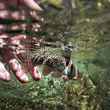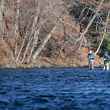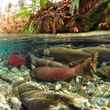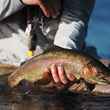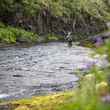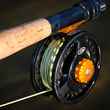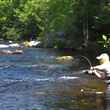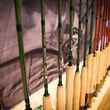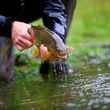I have a friend who casts a fly for neither distance nor accuracy nor stealth. Aside from those limitations, he’s a splendid fisherman. It’s not for lack of strength or dexterity or intellect that he casts with less than average skill. Warren is a farm boy from Catawba, Wisconsin, and he has the farm-boy frame you’d expect: bone, muscle and gristle. He learned to play ice hockey and fly airplanes in his forties.
It looked like he knew what he was doing
by Tim Schulz - Tuesday, Apr 11th, 2023



